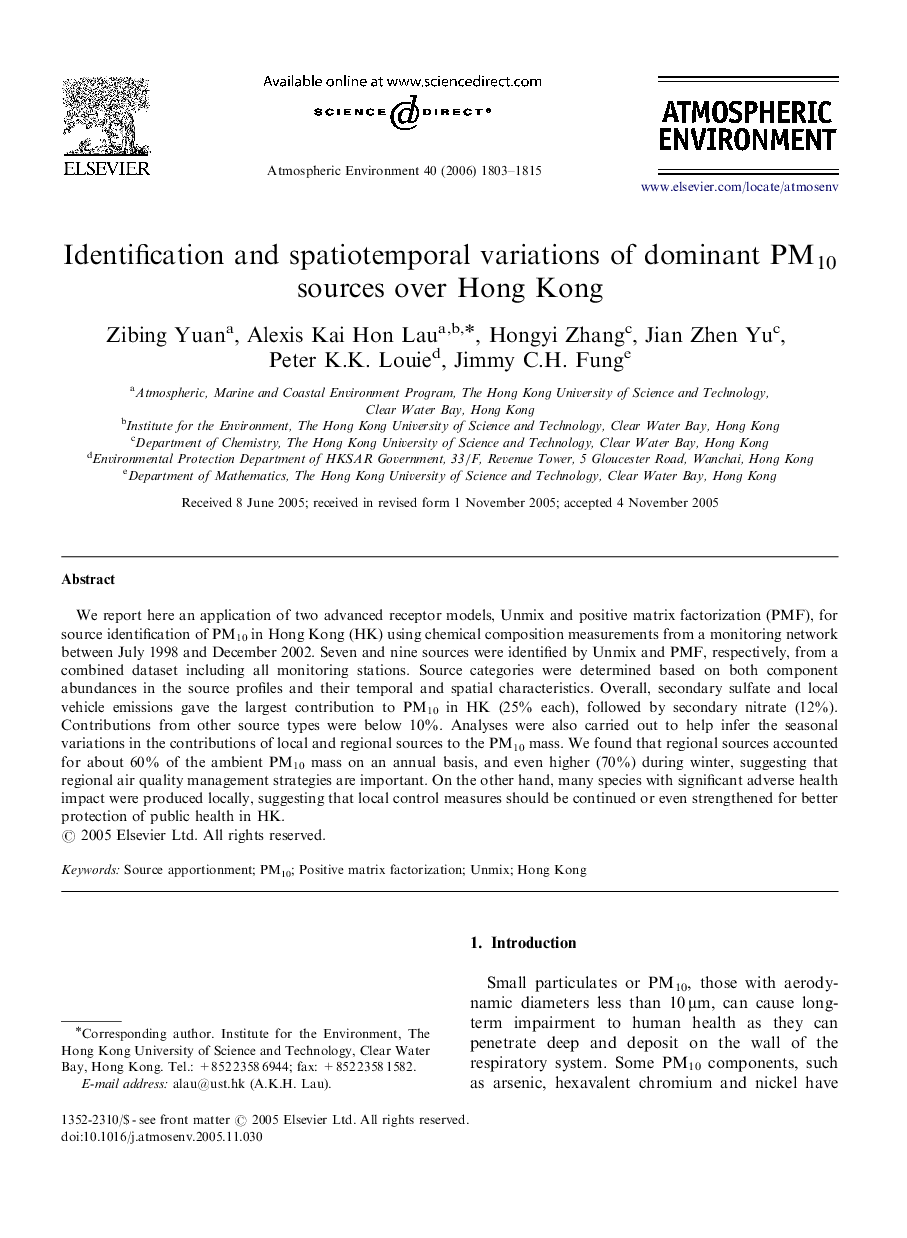| Article ID | Journal | Published Year | Pages | File Type |
|---|---|---|---|---|
| 4444253 | Atmospheric Environment | 2006 | 13 Pages |
We report here an application of two advanced receptor models, Unmix and positive matrix factorization (PMF), for source identification of PM10 in Hong Kong (HK) using chemical composition measurements from a monitoring network between July 1998 and December 2002. Seven and nine sources were identified by Unmix and PMF, respectively, from a combined dataset including all monitoring stations. Source categories were determined based on both component abundances in the source profiles and their temporal and spatial characteristics. Overall, secondary sulfate and local vehicle emissions gave the largest contribution to PM10 in HK (25% each), followed by secondary nitrate (12%). Contributions from other source types were below 10%. Analyses were also carried out to help infer the seasonal variations in the contributions of local and regional sources to the PM10 mass. We found that regional sources accounted for about 60% of the ambient PM10 mass on an annual basis, and even higher (70%) during winter, suggesting that regional air quality management strategies are important. On the other hand, many species with significant adverse health impact were produced locally, suggesting that local control measures should be continued or even strengthened for better protection of public health in HK.
